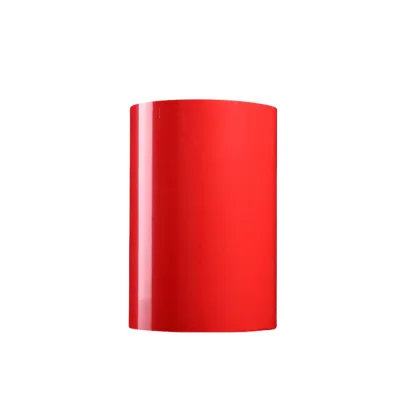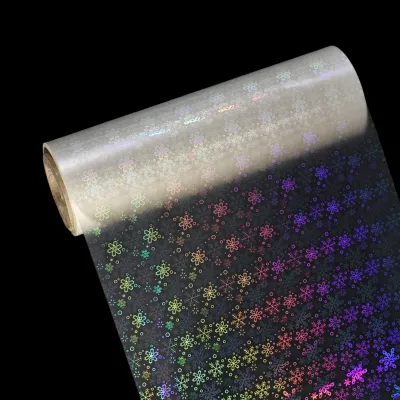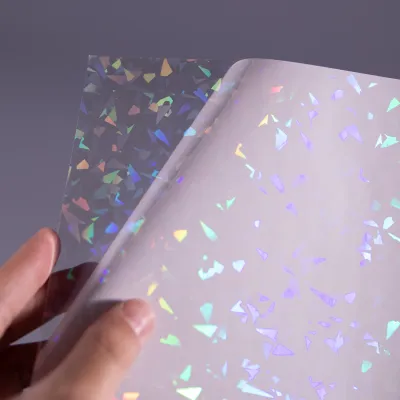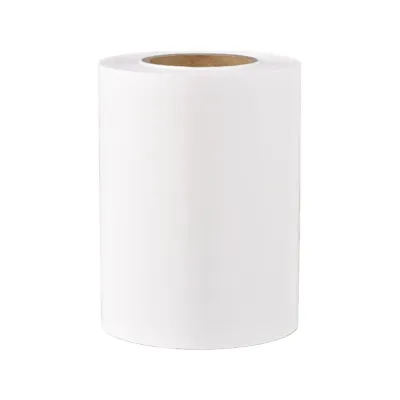Why do thermal paper stickers fade?
The coating of thermal paper adhesive labels contains specific thermal sensitive components, such as no color dyes (such as crystal violet lactone in the triphenylalkylbenzene phthalein system, fluoranthene management system, etc.) and color developing agents (such as para hydroxybenzoic acid and its esters, salicylic acid, etc.).
When these components are heated, they undergo chemical reactions and produce colors.
However, this color reaction is reversible, meaning that colored products will decompose to varying degrees on their own, causing the color of the handwriting to gradually fade.
 Fragile Paper Label Introduction to Knowledge>
Fragile Paper Label Introduction to Knowledge>
Can PET stickers be used as beer labels?
PET stickers can be used as beer labels.
PET adhesive has good hardness and brittleness, can withstand certain high temperatures, resist harsh environments, and resist corrosion from chemicals such as acid and alkali. At the same time, it also has characteristics such as waterproofing, oil resistance, resistance to tearing, and high temperature resistance, which make it particularly suitable for use as a beer label. This is because beer requires label materials that are waterproof, moisture-proof, and resistant to low temperatures during storage and transportation, and have strong adaptability and are not easily detached. In addition, PET adhesive label paper also has good natural biodegradability, which can meet environmental protection requirements, which is particularly important in the context of increasing environmental awareness. In addition, its excellent printing performance also makes it suitable for various printing equipment and can produce various exquisite labels.
Therefore, PET adhesive is a very suitable material for use as beer labels.
The advantages of synthetic paper adhesive labels compared to other labels are mainly reflected in the following aspects
1. Environmental friendliness: Synthetic paper does not require the use of wood or natural textile materials in the production process, greatly reducing the consumption of natural resources. At the same time, synthetic paper is recyclable and has a high reuse rate, which is in line with environmental protection concepts. In contrast, traditional paper labels generate a large amount of waste during the production process, causing pollution to the environment.
2. High strength and wear resistance: Synthetic paper has high strength and wear resistance, and can withstand various harsh environmental tests. In logistics, warehousing and other processes, synthetic paper adhesive labels can maintain clear and complete identification, and are not easily detached or damaged. Traditional paper labels are prone to wear and tear during transportation, which affects the clarity and integrity of the identification.
3. Lightweight and Soft: Synthetic paper adhesive labels use synthetic paper as the substrate, which has a lighter weight and softer texture compared to traditional paper. This makes synthetic paper adhesive labels more flexible when pasting and able to adapt to various curved surfaces.
5. Waterproof and moisture-proof: Synthetic paper adhesive labels have good waterproof and moisture-proof properties, and can maintain good adhesion and durability in humid environments. This makes synthetic paper adhesive labels widely applicable in situations where waterproofing and moisture resistance are required.
6. High temperature resistance: Synthetic paper adhesive labels can withstand high temperatures and are not easily deformed or foamed. This makes synthetic paper adhesive labels have good adaptability in situations where high temperature resistance is required.
In summary, synthetic paper adhesive labels have shown excellent performance in environmental protection, strength, wear resistance, lightweight and soft, waterproof and moisture-proof, and high temperature resistance. Therefore, they have been widely used in various fields such as cable labels, medical, pharmaceutical labels, electronic devices, household appliances, automobiles, chemical industries, and more.

What is the difference between thermal paper and adhesive paper?
Thermal paper, to be precise, is also a type of adhesive paper. Unlike other types of adhesive paper, the key lies in the printing method. Thermal paper uses a thermal coating and does not require carbon tape printing, but has a shorter storage time. All other ordinary adhesive paper is printed using carbon tape or inkjet printing (with a long storage time).
Thermal paper is a special type of coated processing paper that has a similar appearance to ordinary white paper. The surface of thermal paper is smooth and is made of ordinary paper as the paper base. A layer of thermal color development layer is coated on top of it, all of which are coated on one side of the surface of ordinary paper. The color development layer is composed of adhesive, color developer, and colorless dye (or hidden dye), and is not separated by microcapsules. The chemical reaction is in a "latent" state. When thermal paper encounters a heated print head, the color developer and colorless dye on the printed area of the print head undergo a chemical reaction and change color, forming graphics and text. When thermal paper is placed in an environment above 70 ℃, the thermal coating will begin to change color.
Let's take a look at other adhesive papers. Taking copperplate paper as an example, the production process of copperplate paper is relatively simple. It is made by applying a layer of white coating on the surface of a piece of original paper and processing it through super calendering technology. According to the amount of coating applied, copperplate paper can be divided into two types: single-sided copperplate paper and double-sided copperplate paper; According to the different paper surfaces, copperplate paper can be divided into two types: matte copperplate paper and textured copperplate paper.
Copperplate paper has a wide range of applications, such as product brochures, books, magazines, product packaging, printed posters, promotional brochures, calendars, business cards, etc. that we often see in our daily lives. Most of them are printed and produced using copperplate paper. Copperplate paper made labels, trademarks, etc. are not only moisture-proof and have a long service life, but also convenient to use and have a long storage time, which is deeply loved by users.
How to choose materials for daily chemical labels?
The so-called daily chemical label refers to the label used for shampoo, shower gel, facial cleanser, laundry detergent, and toilet cleaner. At present, the labels for daily chemical products in the market are mainly made of PE or PP adhesive materials, so using the same material for thin film adhesive labels is the most suitable: on the one hand, thin film materials are not easily affected by humidity; On the other hand, the film label made of the same material as the packaging bottle has a shrinkage rate that is basically the same as that of the packaging bottle, so it is least likely to have warping problems
But if used as a toilet liquid label, as it belongs to a relatively low-end daily chemical product, using thin film adhesive label material will increase the product cost to a certain extent. Therefore, it is recommended that those who usually use copperplate paper to process such labels for cost considerations, but need to film or polish the labels to reduce the impact of external humidity changes on the label material. Let's briefly discuss the characteristics of these three materials:
1. PE Adhesive Material
PE adhesive is a type of polyethylene film, commonly available in three colors: white, transparent, and bright silver; It has the characteristics of soft material, good bi-directional ductility, resistance to compression, waterproofing, and moisture resistance. Therefore, PE material is preferred for extruded daily chemical products
2. BOPP Adhesive Material
BOPP material is a type of polypropylene film, commonly divided into synthetic paper, pearl film, transparent BOPP, shiny silver BOPP, laser BOPP, etc. It has the characteristics of soft material, smooth and transparent surface, high transparency, temperature resistance, and moisture resistance. Non extruded daily chemical labels can be made of BOPP
3. Copperplate paper adhesive material
Copperplate paper material is a common economical material on the market, which is often chosen for cost saving bottle body daily chemical products. The material itself is not waterproof and has poor moisture resistance, so it is generally used after lamination
Okay, now you know how to choose
We offer comprehensive technical support, including free professional labeling solutions, advice on label materials and adhesive selection, as well as online/offline assistance from professional software and hardware engineers. Service email: andy@ownlikes.cn. In pre-sales, we leverage our extensive experience in specialty labeling projects to provide clients with the most suitable hardware solutions. Additionally, all our label barcode printers and scanners come with a three-year free warranty, demonstrating our confidence in our products.




